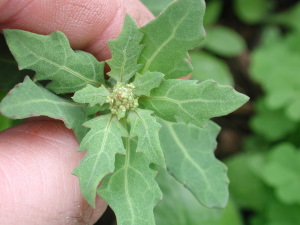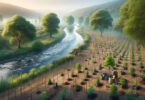By Michael Smith
Guest Writer for Wake Up World
For some time now already I have been deliberately growing edible weeds in my garden and aside from those that popped up all by themselves, such as dandelion and chickweed, both of which are very good eating indeed, I have also brought in other purposely, as plants, such as sorrel (Rumex acetosa).
Why grow edible weeds?
1. Edible weeds, like all weeds, need little to no input and basically look very much after themselves. They only need harvesting. Some do not like feeding or such at all and thrive best when left to do their own thing.
2. Many edible weeds are better for us than are cultivar (leaf) vegetables, including the cultivated varieties of those weeds. Dandelion is a great salad vegetable, akin to rocket (arugula) though not a relation, and sorrel, basically, is a cut-and-come-again spinach though, once again, not a relation to the other plant.
3. Weeds will grow in your garden anyway and thus it is better to harvest those that are good to eat, you save yourself a lot of work that way and get great stuff to eat to boot.
But why not simply forage for them in the wild?
1. Some of them you can no longer get once the tree canopy has closed and the light conditions on the forest floor are too low. In your garden, even in the shade, they will, however, more often than not, keep going and growing.
2. Growing those wild edibles yourself in your yard means that you know – more or less – what has come in contact with them, especially as regards to animal waste matter, such as dog or fox urine and such. You also know that they have not been exposed to chemicals or car exhaust fumes, and other nasties.
3, All you have to do when you want some of those vegetables for your meal is to pop out the door and pick some fresh from the plant. No need to go out looking for them in the wild.
Ground elder is another, very invasive weed that many gardeners get plagues with. If you would want to eradicate you will end up spending hours or you will have to resort to chemicals. The positive side, however, it is a very valuable food and it was, in fact, introduced to the British Isles by the Romans as a food crop, and it is great eating. Therefore why bother eradicating it. Just eat it.
If you would wish to grow this plant on purpose my word of caution is to retain it in some sort of planter so that it cannot escape into the wild, or has little chance to do so.
If you have it popping up in your garden for the first time then grab it as it just develop and plant it into a container as a wild veg. Should the patch have gone beyond being able to be relocated then contain it, if possible, by sinking paving slabs into the ground to a good depth all around. Thus you may be able to contain the plants and their enormous root system and make use of it as a veg in perpetuity.
All edible weeds that you grow should, ideally, be grown in containers to prevent them spreading to where you may not want them. In generally weeds, because they grow fast, may interfere with the growth of other vegetables that you may wish to grow, and that in a number of ways.
On the other hand, some weeds make good companion plants and one especially and this is, yet again, and edible one, namely goosefoot, also known as fat hen or lamb’s quarter. It acts as a sacrificial plant for the leaf miner. The bug will rather burrow around in the leaves of the goosefoot than those of your veg and therefore goosefoot, and also for the fact that it is good to eat, should not be eradicated.
Goosefoot, in the same family as quinoa, is an annual, that is to say it reproduces from seed only and not from any rootstock unlike dandelion which spreads by seed but also stays as a plant in the ground, or sorrel, or ground elder. I tried to introduce goosefoot into a container in my garden last summer but I did not get the plants to produce the needed seed to perpetuate themselves. In fact something ate them and it was not me.
Just some food for thought here as to why not just forage your yard and encouraging the wild things you like to eat to your home.
Previous articles by Michael
- Making Use of Juicer Pulp Residue
- Australian Government Set to Seize Money from Citizens Bank Accounts
About the author:
Michael Smith (Veshengro) is the editor of Green (Living) Review.

If you've found value in our articles, we invite you to support the release of our brand-new book, "Gratitude Practices for Kids: A Practical Guide for Adults to Instill a Spirit of Appreciation and Positivity in the Next Generation."
"Gratitude Practices for Kids" brings together over 25 innovative and accessible practices designed to enhance gratitude in everyday life. This comprehensive guide is backed by 17 scientific studies, ensuring each concept is grounded in research, underscoring our commitment to nurturing growth, emotional intelligence, and positive interactions between adults and children.
We encourage you to opt for the paperback version to celebrate this new release. Dive into its fresh pages away from digital distractions, allowing you to immerse yourself in the transformative practices it offers.
Over recent years, Wake Up World has faced significant online censorship, which has impacted our financial ability to operate. Moving into book publishing represents a strategic step to secure the ongoing funds needed to continue our mission. By purchasing Gratitude for Kids, you help us keep our content free and accessible to everyone, avoiding needing a paywall. With over 8,500 articles published in the last 13 years, we remain dedicated to keeping our valuable content open to all.








